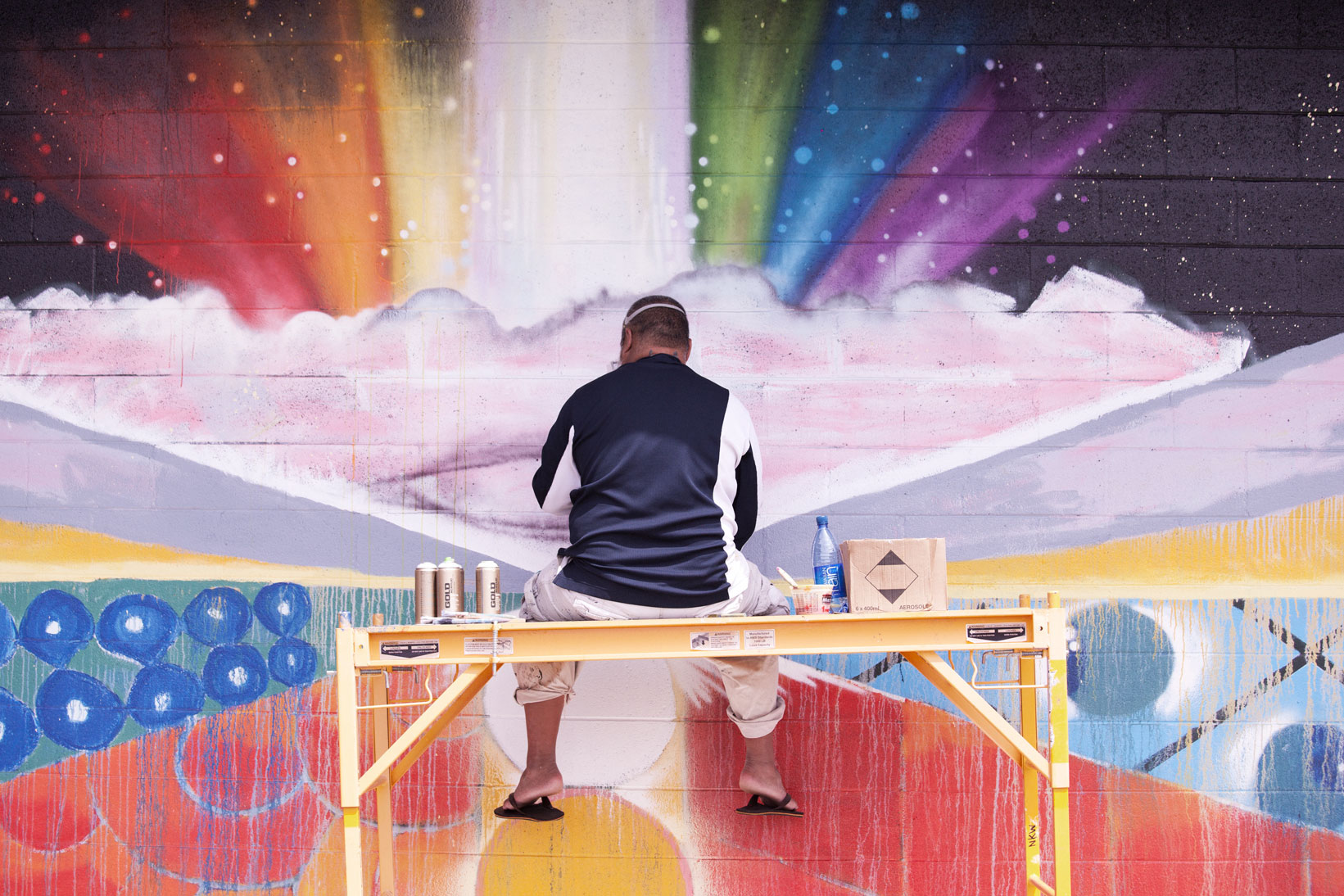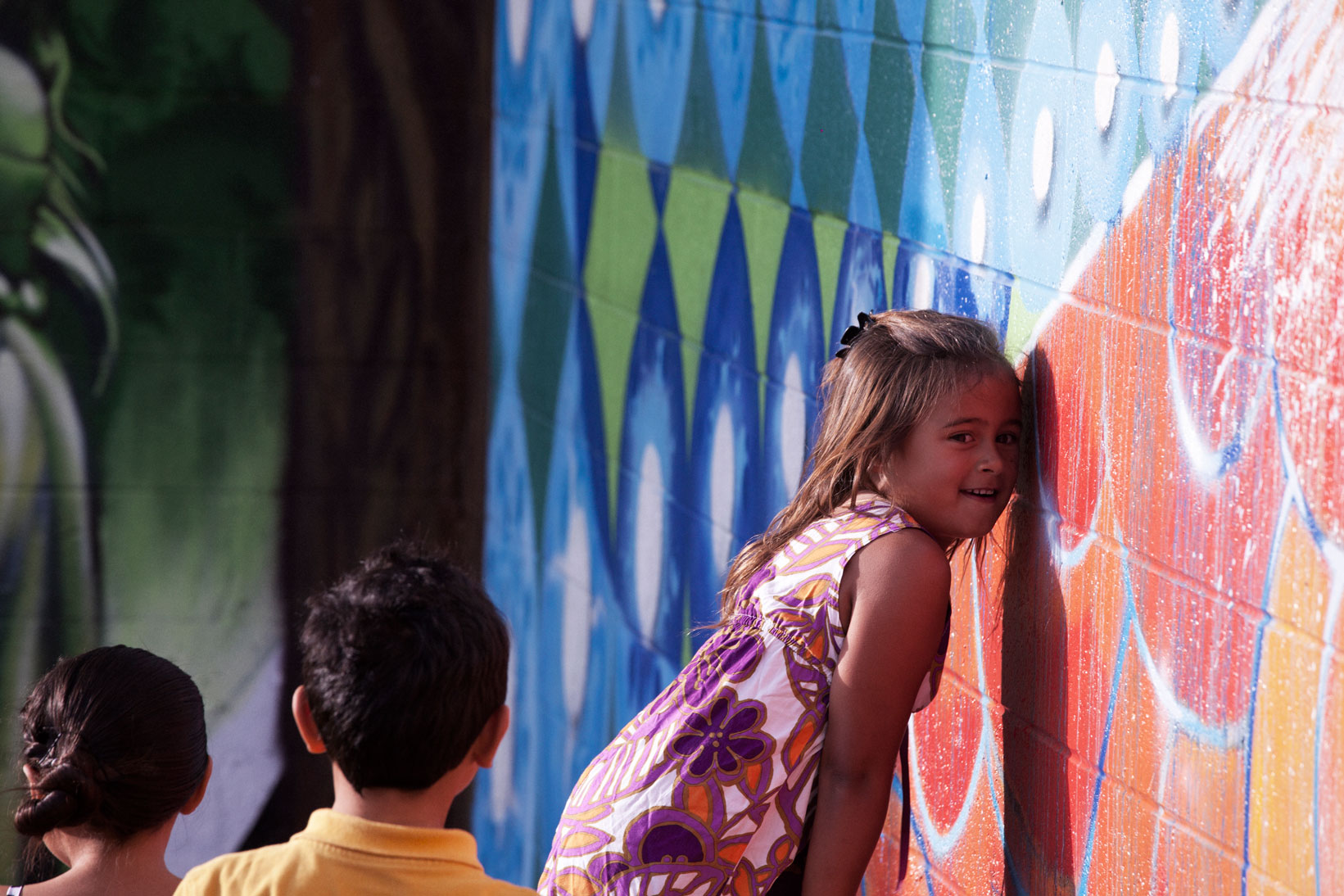
What is graffiti? Art? Rebellion? Expression? For artists Estria Miyashiro (a.k.a Estria) and John Hina (a.k.a Prime), graffiti has become a conduit for connecting with Hawaiian culture. Alongside a group of Native Hawaiian youth from the rural community of Waimea, the pair create a mural that changes the community’s landscape and, unexpectedly, helps them rediscover their Hawaiian identities.
Justine Shani of CineVue spoke with Tadashi Nakamura, the director of MELE MURALS. MELE MURALS was featured in AAIFF ’16 on July 23, 2016. For more information about AAIFF, click here.

Justine Shani: Can you talk a little bit about your background as a filmmaker?
Tadashi Nakamura: I’m a fourth-generation Japanese American, born and raised in L.A. Both of my parents are also documentary filmmakers. My dad, Robert Nakamura, is a director, and my mom, Karen Ishizuka, is a producer, and so I grew up with them making films in the garage. All our family vacations were basically shoots and production trips. But it wasn’t until I was at UCLA and I became an Asian American Studies major, and I took my dad’s class–he was a professor at UCLA–that’s where I learned to make my first film.
JS: What drew you to this story?
TN: ʻŌiwi TV, an all-native Hawaiian production company, had worked with me on my last film, Life On Four Strings. Keoni Lee, who is one of the founders, knew Prime and had heard of Estria. He had seen some of the early murals that they were building together, and he approached me because he felt that he could provide the perspective from the native Hawaiian community, and I could provide the general, Asian American, mainland, hip hop perspective.
As soon as I saw Prime’s and Estria’s work, I was immediately drawn to it. I’ve been a huge fan of street art and hip hop in general, so I was mainly attracted to that. As the story got deeper and deeper, I was allowed into the native Hawaiian community, and I got to witness this one small story in the larger resurgence of native Hawaiian language and culture. It was really exciting for me and I felt privileged to help tell that story to a larger audience.
JS: How do you know Estria and Prime, and what is your relationship with them like?
TN: I had not met them until we started working on the film. Because Estria is part Japanese American and spent a lot of time in the Bay Area, he and I were able to connect a lot over understanding the differences between Hawaii and California, in terms of the pressures of an artist coming from a big city like L.A. or San Francisco or Oakland.
I just really admired both of them–they’re just true masters of the craft. Like any artist, at first, it’s all about establishing yourself, establishing a style, establishing your name. But I think they’ve both evolved into trying to serve their community with their art. That’s one of my goals as a filmmaker as well.

JS: Often in documentary films, you can feel the presence of the filmmakers as outsiders imposing on the subject. This film didn’t feel that way–it felt very organic, like we, the audience, were already a part of the community. How were you able to achieve that?
TN: This is actually the first time that I’ve done a film outside of my own Japanese American community. I was really hesitant about that because I feel like every community should be able to tell their own story, instead of having someone from the outside come in and tell their story. That’s why it was a true collaboration with ʻŌiwi TV. For example, the associate producer Āina Paika and the cinematographer Justyn Ah Chong are both native Hawaiian filmmakers. They did the majority of the filming. And I think the fact that they’re Hawaiian and they’ve been documenting the native Hawaiian community for years is why people in the Waimea community felt comfortable. I was actually the only one who wasn’t Hawaiian, but because of ʻŌiwi TV’s good reputation in the community, they trusted me and opened their arms.
JS: Can you talk a little bit about the tension between individuality and community culture in the film?
TN: Any artist who’s trying to make a collective effort really has their own style and their own voice, and what it comes down to is decision making. As an independent artist, you make all those decisions by yourself. But when you’re working in a community context, all of a sudden those decisions aren’t yours to make. In theory that sounds really good, but in practice, it’s a lot harder. Every artist has an ego. They don’t necessarily want to create anything that’s lower than their own artistic standards. But at the same time, if you can get through that, the process is much, much harder, but the payoff is way bigger.

JS: What was the inspiration behind the musical choices in the film?
TN: Almost all of the music was created by a producer named Sabzi. He’s a good friend of mine. He is a producer for two groups, Blue Scholars and Made in Heights. Most of the tracks in the film are from the Made in Heights album. The music was so cinematic that it was really fun to match my favorite songs of his to specific scenes. The theme of the film is about integrating modern ways to teach traditional things, and so I felt that using more modern hip hop beats rather than traditional Hawaiian music added to that theme.
JS: What draws you to documentary filmmaking?
TN: As an audience member growing up, I always felt like I learned a lot more through documentary. For me, the challenge is to try to find that element of education and empowerment, while also having a high level of production value and entertainment. I always strive to make films that are as impactful, but more entertaining than the ones that I watched growing up.


